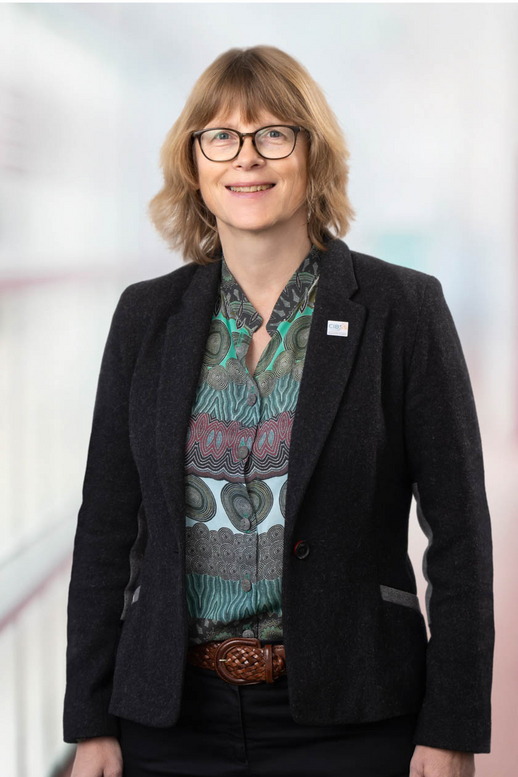Prof. Dr. Carola Hunte

Contact
Institute of Biochemistry and Molecular Biology (Faculty of Medicine)
University of Freiburg
T +49 761 203 5279
carola.hunte(at)biochemie.uni-freiburg.de
Further Information
Biological membranes are essential for life. Their specific functions are accomplished by membrane proteins. These proteins, embedded in or associated with the membrane, enable the communication of the cell with other cells and with the environment, facilitate the transport of substances through the membrane, or catalyze biochemical reactions. About a third of the proteins of an organism are membrane proteins and they constitute more than 60 % of all drug targets.
Research of the group addresses the question how medically relevant membrane proteins execute their functions, with specific emphasis on signal integration. We investigate the underlying molecular processes with an integrated structural biology approach using biochemical and biophysical methods including X-ray crystallography and cryo-electron microscopy. Structural analyses will also contribute to understand the molecular basis of diseases, may pave the way to rational drug design, and could aid in the development of therapeutic strategies.
We are particularly interested to elucidate how ion transporters integrate signals to adapt the cellular response to changing metabolic and developmental needs. A second line of research focusses on respiratory complexes that fuel biological energy conversion and generate reactive oxygen species, investigating the molecular basis of an integrated control of cellular respiration and metabolism.
Keywords
Membrane structural biology, integrative signaling, cellular respiration, reactive oxygen species, ion transport, ion homeostasis, X-ray crystallography, cryo-electron microscopy, recombinant antibodies
Claude Bernard
“Art is I; science is we.”
10 selected publications:
- Structural basis for safe and efficient energy conversion in a respiratory supercomplex.
Kao W-C*, Ortmann de Percin Northumberland C, Cheng TC, Julio Ortiz J, Durand A, von Loeffelholz O, Schilling O, Biniossek ML, Klaholz BP, Hunte C* (2022).
Nat Comm 13, 545 *corresponding - Mechanistic insight from the crystal structure of mitochondrial complex.
Zickermann V*, Wirth C, Nasiri H, Siegmund K, Schwalbe H, Hunte C*, Brandt U* (2015).
Science 347,44-49.
*corresponding - Structural analysis of atovaquone-inhibited cytochrome bc1 complex reveals the molecular basis of antimalarial drug action.
Birth D, Kao WC, Hunte C (2014).
Nat Comm. 5, 4029. - Functional modules and structural basis of conformational coupling in mitochondrial complex I.
Hunte C*, Zickermann V*, Brandt U (2010).
Science 329, 448-451.
*equal contribution - Structure of complex III with bound cytochrome c in reduced state and definition of a minimal core interface for electron transfer.
Solmaz SR, Hunte C (2008).
J Biol Chem. 283, 17542-17549. - Structure of a Na+/H+ antiporter and insights into mechanism of action and regulation by pH.
Hunte C*, Screpanti E, Venturi M, Rimon A, Padan E*, Michel H* (2005).
Nature 435, 1197-1202.
*corresponding - Lipids in membrane protein structures.
Palsdottir H, Hunte C (2004).
Biochim Biophys Acta 1666, 2-18. - Crystal structure of the yeast cytochrome bc1 complex with its bound substrate cytochrome c.
Lange C, Hunte C (2002).
Proc Natl Acad Sci U S A 99, 2800-2805. - Specific roles of tightly bound phospholipids in the yeast cytochrome bc1 complex structure.
Lange C, Nett JH, Trumpower BL, Hunte C (2001).
EMBO J. 20, 6591-6600. - Structure at 2.3 Å resolution of the cytochrome bc1 complex from the yeast Saccharomyces cerevisiae co-crystallized with an antibody Fv fragment.
Hunte C, Köpke J, Lange C, Roßmanith T, Michel H (2000).
Structure 8, 669-684.



